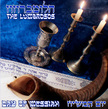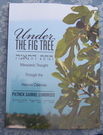And a leper came to him, imploring him, and kneeling said to him, "If you will, you can make me clean."
The Torah spends a considerable amount of time detailing a condition called leprosy. It tells us about people’s leprosy, but also about leprosy in beards, fabrics, and houses (Leviticus 13:18–59). Leprosy in the Bible seems to relate not only to the loathsome disease by that name, but also to all sorts of corruption and decay. The term seems to be used to refer to the advance of death and corruption in matter (Leviticus 13:4–8).
On a metaphorical level, Jewish sages referred to leprosy as the disease the snake inherited as part of the curse. Ritual contamination and mortality is part of the curse brought on man because of sin so the metaphor is certainly befitting.
Leprosy is also associated with one of the most important sin in the Bible, the one called lashon harah which literally means the evil tongue. The term refers to gossip and slander because after slandering Moses, her brother and divinely appointed leader of Israel, Miriam was afflicted by this leprosy (Numbers 12). Leprosy and the state of ritual impurity are irrelevant today because they technically only relates to the Temple in Jerusalem which does not exist at this present time.
At the time when religiosity accorded undue emphasis to ritual purity, Yeshua came to put it back in its proper perspective. In the days of the Master, Priests and Levites were so obsessed with ritual purity that they would ignore the commandments about mercy and helping those in need for fear of defiling themselves. We can see this in the parable of the Good Samaritan (Luke 10:33). Yeshua on the other hand was not afraid of being defiled by leprosy. On some occasions he even voluntarily touched a leper to heal him (Matthew 8:2-3). He even entered the house of Simon the Leper to eat with him, and this is where he met Mary-Magdalene (Matthew 26:6-7).
The Talmud tells of one called, The Leper Messiah. It presents a supposed discourse between the great Rabbi Joshua ben Levi and the prophet Elijah. The rabbi asks "When will the Messiah come and by what sign may I recognize him?" Elijah tells the rabbi to go to the gate of the city where he will find the Messiah sitting among the poor lepers. The Messiah, says the prophet, sits bandaging his leprous sores one at a time, unlike the rest of the sufferers, who bandage them all at once. Why? Because he might be needed at any time and would not want to be delayed (Sanhedrin 98a). While this may seem to be a far-fetched story, it is not the only Jewish text which associates Messiah with leprosy. One of the names of the coming Messiah in the Talmud is: ‘The Leper Scholar’.
Unlike the exclusive religious leaders of his days who stayed away, Yeshua came to us and voluntarily put on the decaying condition of mortality. He even contaminated himself by touching our leprosy. While were still in our mortal decaying condition, he entered our house to fellowship with us. But the story doesn't end here; the most wonderful part of it is that as he goes back to his Father and our God, he takes us with him to partake of his pure resurrected body. What a wonderful Messiah we have. Amen and Amen. May it be soon, even in our days!
P. Gabriel Lumbroso
www.thelumbrosos.com
For P. Gabriel Lumbroso's devotional UNDER THE FIG TREE in Kindle edition click here.
 RSS Feed
RSS Feed


